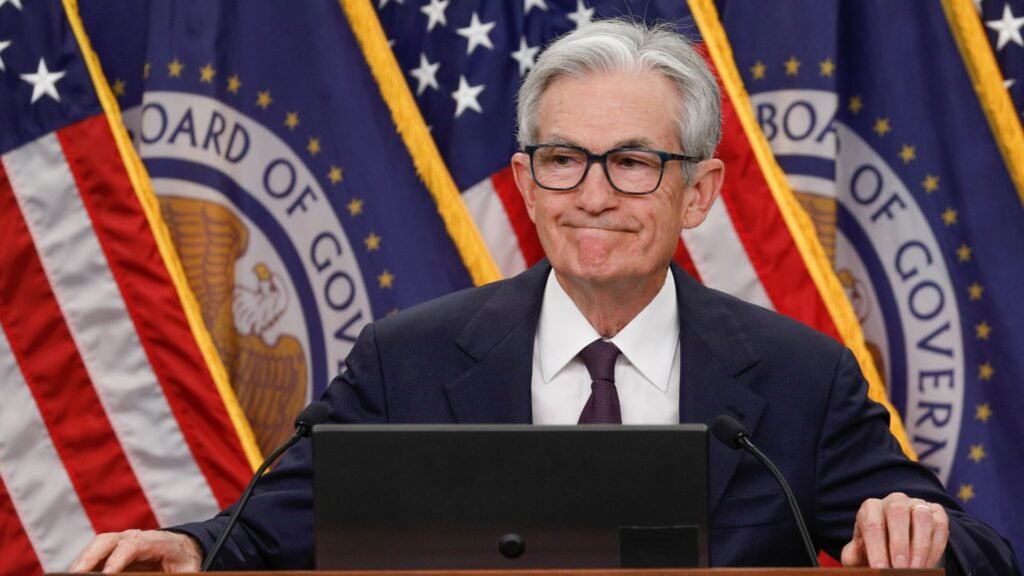The Chairman of the Federal Reserve, Jerome Powell, addresses a press conference on June 18, 2025, in Washington DC, United States.
Yasin Ozturk | Anadolu | Getty Images
This week, Federal Reserve Chair Jerome Powell is heading to Capitol Hill, where he is under growing pressure from both external and internal sources to begin reducing interest rates.
Powell’s biannual report to Congress starts Tuesday morning, where he will present the Fed’s monetary policy overview to the House Financial Services Committee. He will then appear before the Senate Banking Committee on Wednesday.
These sessions, which Congress mandates, typically allow the Fed chair to share insights on the economic landscape and monetary policy. Legislators can pose questions, which may sometimes become contentious, though severe confrontations are rare.
However, the situation this time is different: President Donald Trump and various White House officials have intensified their demands for Powell to initiate rate cuts, while two significant Fed leaders have recently expressed support for a potential reduction as soon as July.
These dynamics have led to increased speculation on Wall Street about the Federal Open Market Committee (FOMC), which usually operates beyond political influence, seeing some of its usual defenses weakened.

“We’re starting to see some political pressure on the FOMC,” asserted Mohamed El-Erian, chief economic advisor at Allianz, during an interview on CNBC on Monday.
El-Erian’s remarks followed Fed Governor Michelle Bowman’s statement in Prague, where she indicated that she might support easing policy next month if inflation signals remain consistent.
Governor Christopher Waller expressed similar views on CNBC last Friday, suggesting at least some dissent against Powell’s previous assertions that the Fed is in a strong position to adopt a more cautious stance as tariff effects unfold.
It’s worth noting that both Waller and Bowman were appointed by Trump during his first term and have been mentioned as possible candidates to succeed Powell next year.
“Now, with two Republican-leaning governors suggesting a July cut, they have influenced the market,” said El-Erian. “It’s going to be challenging for Jay Powell to unify everyone on a single message.”
Market predictions have adjusted, with traders raising the chances of a July cut to about 23%, and a significantly higher 82% for a September adjustment, according to CME Group’s FedWatch tool.
Powell anticipates a potentially tumultuous two days as he articulates the Fed’s stance amidst possible disagreements from both sides of Congress. Following Trump’s lead, Republicans will likely press Powell on the delays in implementing easier monetary policy, while liberal Senator Elizabeth Warren has also urged for rate cuts.
The challenge of Trump’s requests
However, Trump’s calls for drastic reductions—he has proposed at least a 2 percentage point cut—are unlikely to happen.
Waller, in a CNBC discussion, advocated for a gradual approach to cuts. At last week’s FOMC gathering, members indicated that the final target rate for fed funds would be about 3%, just 1.25 percentage points lower than the current rate.
Significantly aggressive cuts could also be counterproductive.
When the Fed cut rates by a full percentage point from September to December last year, Treasury yields actually increased, as bond investors anticipated faster economic growth and rising inflation.
“The notion that the Fed can enact changes immediately and that everything aligns perfectly is a misconception,” remarked Jai Kedia, a research fellow at the Cato Institute, a libertarian think tank. “People often overestimate the Fed’s immediate effects on the economy.”
Nonetheless, the administration is pressing for swift action from Powell, despite the fact that he is just one of the twelve members voting on the committee responsible for setting interest rates.
Bill Pulte, director of the Federal Housing Finance Agency, stated on X that there is “growing momentum for Powell’s immediate resignation”—though Trump has not called for this—adding that “it is evident that Powell’s perceived bias against our great President requires scrutiny.”
The Fed’s responsibilities
Kedia, however, argued that the White House’s demand for immediate drastic action is unwise.
He explained that lowering federal borrowing costs isn’t part of the Fed’s responsibilities.
“The Fed’s primary goals are to stabilize inflation and employment,” Kedia emphasized. “While there can be discussions about the appropriateness of this mandate, if you assign it the task of managing federal debt, you endanger that mandate.”
Similar to El-Erian, Kedia concurs that while a rate cut might be appropriate, current market indications favor September over July for this first adjustment. FOMC members expressed differing views during last week’s discussions on the direction and extent of potential cuts.
Kedia warned that if Powell and the FOMC yield to Trump’s pressures, they risk damaging both the economy and their credibility.
“I believe rates are somewhat excessive, but the reasoning for cuts should derive from a monetary policy framework and macroeconomic indicators, none of which support the substantial reductions Trump is advocating,” he stated. “A strong case can be made for the Fed to lower rates, but it should be based solely on economic rationale, not politics.”



